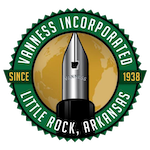(Jeff Abbott is a regular contributor at The Pen Addict. You can find more from Jeff online at Draft Evolution and Twitter.)
Pilot Iroshizuku inks are well-known for being great fountain pen inks, and I'm sure we've all tried our fair share of different colors from the brand. For many of us, some of our favorite inks come from this line, and for good reason.
I've long been a fan of their Kon-peki ink, which is a bright blue that pops off any page. But, it can be a bit too much pop for some moods. Another favorite color of mine for fountain pen inks is turquoise mixed with other colors to tone down the gemstone feel. Sailor Yama-dori is a wonderful ink, and I've recently come to love Franklin Christoph's Midnight Emerald. Both of these inks are dark, subdued, and expose beautiful levels of depth when writing. So, it was only inevitable that I try the Iroshizuku color that somewhat matches the same spectrum. In short, it's an exceptional ink with a beautiful color.
Pilot Iroshizuku Syo-ro is labeled as "Pine Tree Dew" on JetPens' site, which boils down to "Gray Turquoise." In this case, I think the word arrangement is perfect — it's definitely a turquoise ink with a bit of gray mixed in, not the other way around. There's plenty of color in the ink, but it's subdued enough to make it elegant and intriguing. I like inks that make you look twice or second-guess your first assumption.
If you've ever tried an Iroshizuku ink, you know what to expect. If you never have tried them, you're in for a treat. Like all other in this brand, the Syo-ro ink is smooth, quick-drying, and resists feathering and bleeding on pretty much all papers (with the exception being cheap copy paper). There's a fair amount of shading to create the beautiful level of depth in the colors, and it works well with a pen that has some flex.
I've tried some other green inks in the past that I hoped would match the characteristics in this ink. Sadly, most of them looked dull on the page after the ink dried. With Syo-ro, the color is still bright and present after the ink has dried. The color looks like it has life, which exactly what I want from an ink that I use daily.
Show-through, bleeding, and feathering are minimal with this ink. It's remarkably well-behaved in many circumstances, and it's gentle on your pens as well. Cleaning is an easy exercise.
Dry time on this ink keeps surprising me. In most cases on my Rhodia pad, I could only create a tiny smudge on the 10-second mark. This is very quick for a fountain pen ink, and something to keep in mind if that attribute is important to you. Keep in mind, though, that this will vary based on the nib and feed unit for every pen you use.
I really have nothing bad to say about this ink. Sure, the Iroshizuku inks aren't the cheapest, but that's for good reason. When you buy an ink from this line, you know that it will perform well. The only thing you have to decide is what color, or how many.
Syo-ro is available from JetPens in two sizes: a 50ml bottle and a 15ml sample bottle. With the 15ml bottle being half the price of the 50ml bottle, it's hard to justify choosing it. It might make more sense if it was a 25ml bottle to match the price difference, or if the price was more in line with a bottle that is only 30% of the larger one. At any rate, if you like turquoise and fountain pens, this is one you don't want to miss.
(JetPens provided this product at no charge to The Pen Addict for review purposes.)



















